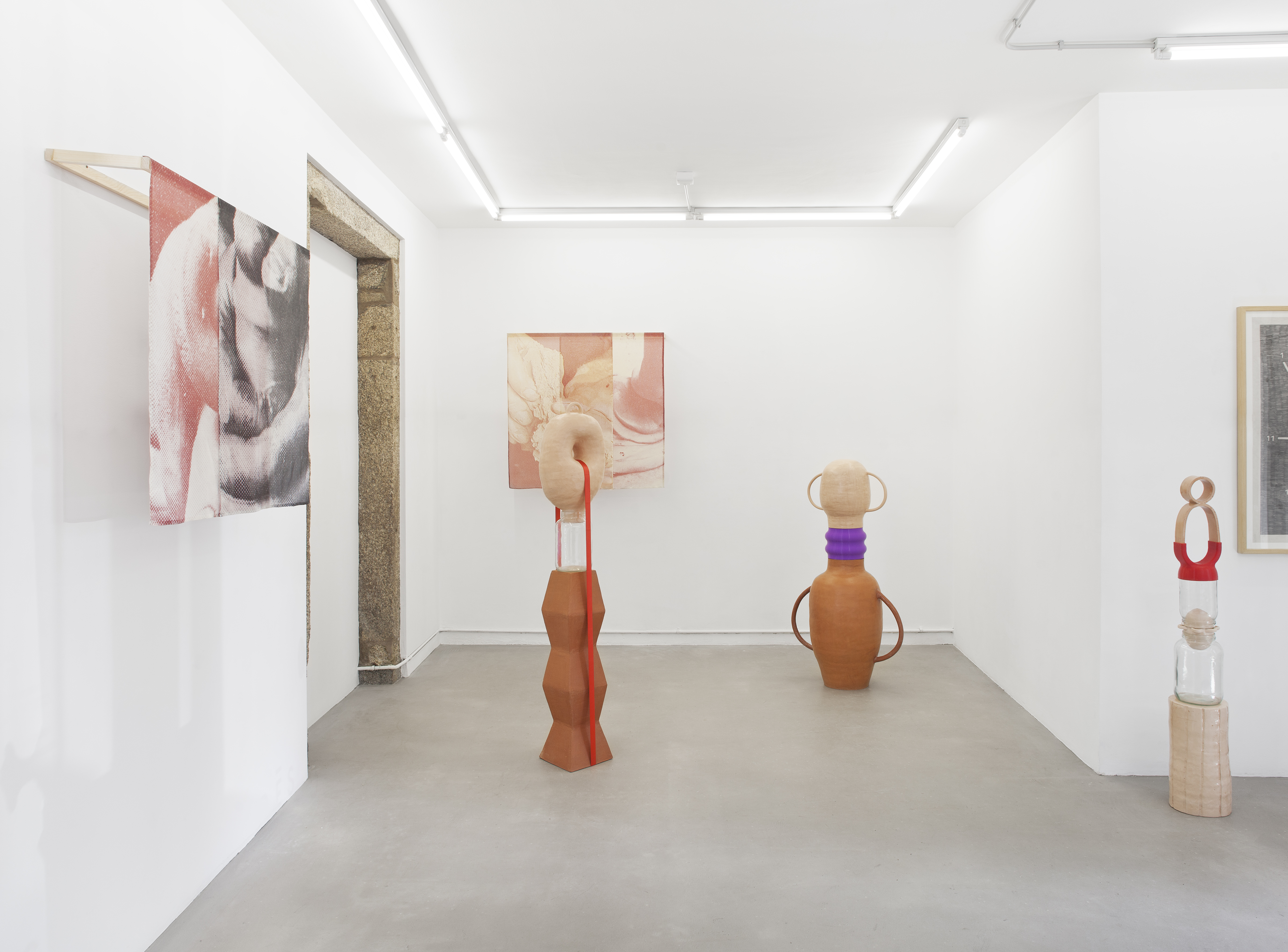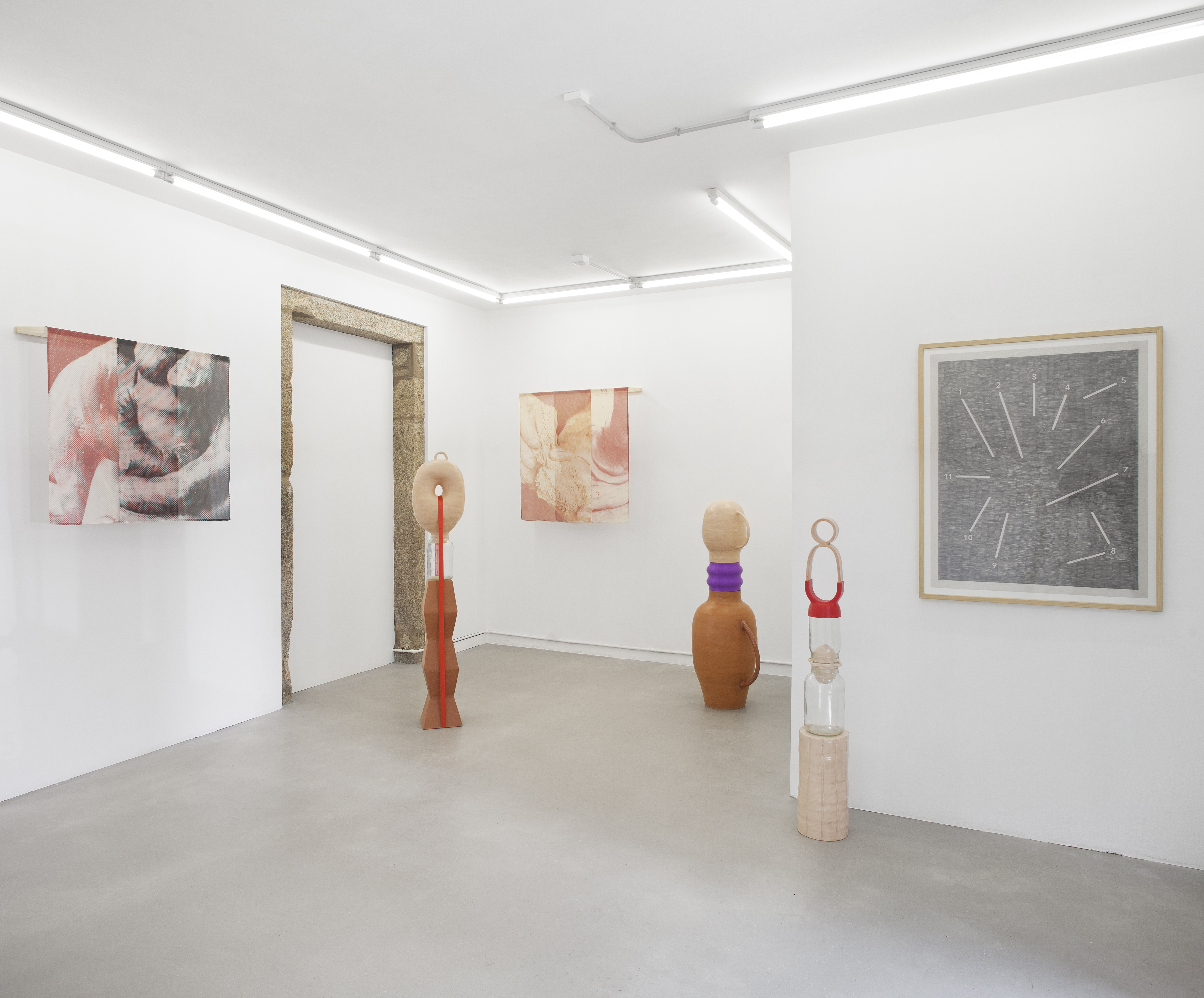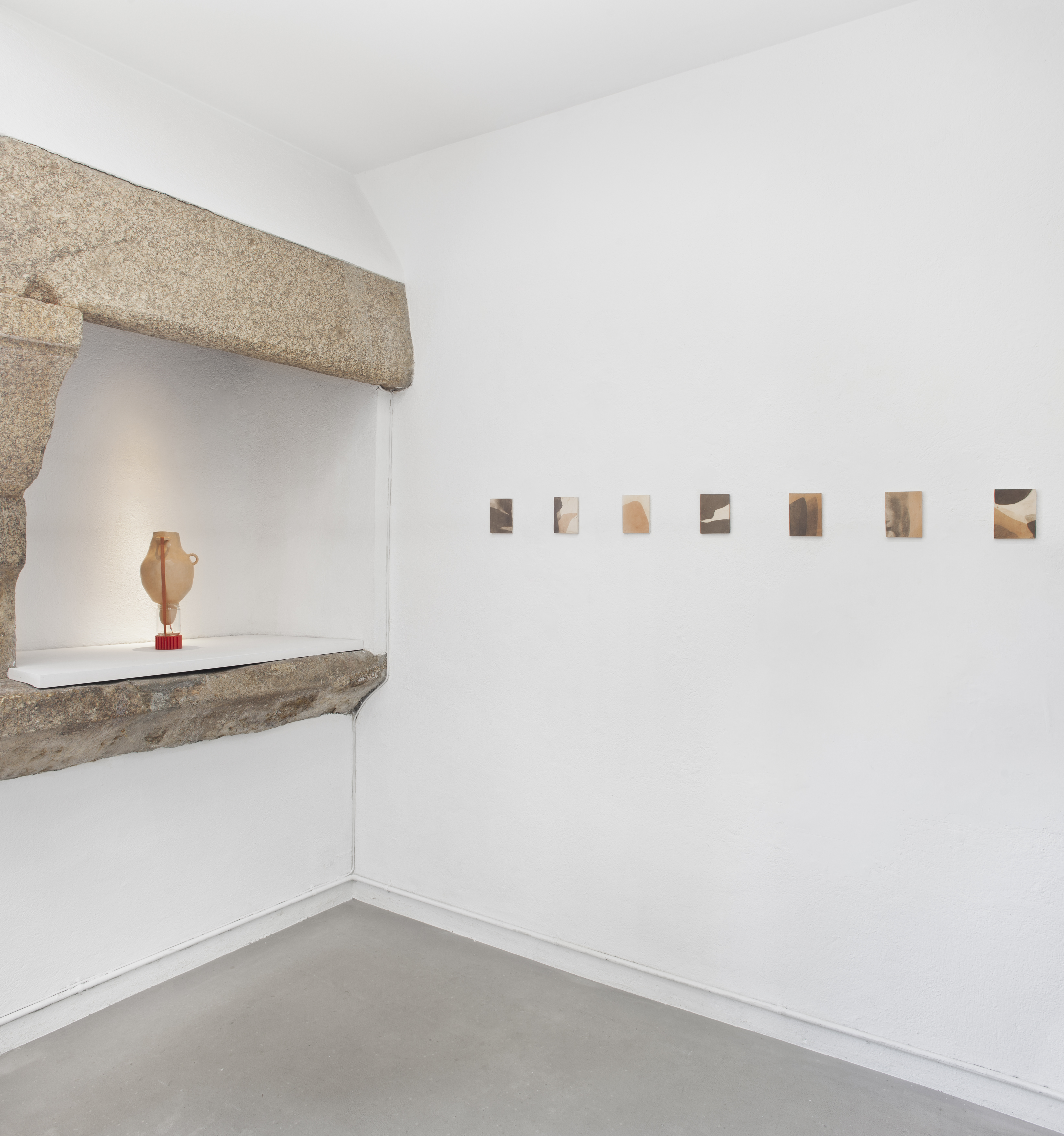









Solo show Galería Nordés, Santiago de Compostela 2021
Photos: Roi Alonso
www.galerianordes.com
ENG
Take a piece of clay and knead it to remove the bubbles,
press the power button and select the eco-mode
make an elongated cylinder and place it in the shape of a circle,
with a sharp blow remove the vacuum,
scratch the surfaces you want to join,
Attention! Before you start, please read the user manual.
Now check the regularity of the obtained shape.
La forma óptima (The optimal shape) is articulated through a series of procedural choices. These revolve around ideas about human gesture, the relationships between bodies and objects and the way in which these are established. Each is enveloped and enveloping, objects and subjects withdraw. The folding and entanglement is, in fact, learned and taught. The world is revealed through the body and our existence and experience appear on this seemingly immovable border of dialogue between the self and the other. Time and effort are presented as the conceptual axis, the new tools have been reducing these two elements through their intricate and complex anatomies.
I come to understand during the production that what interests me are the times intrinsic to the processes and how they are consumed, and also what this has to do with human gestural theatre, which is why the idea of automation and machine is present, of a tool after all. I modify, change and take advantage of the very material nature of things in a kind of qualitative game that branches out in its different modalities, the selection of an existing image and the distortion of this, the focus on something concrete, the search for something tangible or the exercise of dialogue and stacking.
The graphite drawings entitled "Interval of free time" allude to images from instruction booklets in which the object disappears to make room for the arrows and numbers that will later serve to help us understand their structures and how they work. The time saved is freed up and is now presented in a methodical and repetitive work. In another type of instructions, such as those in the book of ceramic techniques that I scan and expand, the body and the clay become the same thing, they are composed of the same type of materiality that is practically dematerialised when presented sublimated on the silk that serves as a support. In "Landscapes" the selective gaze is repeated, the muds of different colours are combined and passed through a press that produces the forms and spots of colour, then isolated in the search for a referentiality to which to adhere. I think that the allusion to the great pictorial genres appears as the need to allude to something, but perhaps it is only an excuse for the collaborative work between me and this machine.
Sculptural constructions are dialogues between bodies and objects. There is something inherently anthropomorphic in ceramics and in its vessel form. The mouths, necks and arms are produced to make contact with the canning jars that populate supermarkets and with pieces printed in saturated colours. It is all fragility and is kept in balance. The industrial and accelerated times are opposed to the artisanal, slow and reflexive times, and on the same plane, these plastic pieces are a deception with regard to their production and appear to be deceptive, appearing to be fast, being constructed, in reality, through a process of accumulated layers that is surprisingly slow and reminds me of working with clay churros in the workshop.
The word optimisation gives the title to this exhibition and I find that it is the word that governs our way of being here and living in the contextual present. On the other hand, I see in the word "form" an interesting polysemy, towards volume, structure or silhouette, but also as a synonym for manner, mode or procedure.
CAST
Coge un pedazo de barro y amásalo para eliminar las burbujas,
pulsa el botón de encender y selecciona el modo eco
haz un cilindro alargado y colócalo en forma de círculo,
con un golpe seco elimina el vacío,
raya las superficies que quieres unir,
¡Atención! Antes de comenzar, lea el Manual del usuario.
Ahora compruebe la regularidad de la forma obtenida
La forma óptima se articula mediante una serie de elecciones procesuales. Estas giran en torno a ideas sobre el gestual humano, las relaciones entre los cuerpos y los objetos y el modo en que estos se establecen. Cada uno es envuelto y envolvente, los objetos y los sujetos se repliegan. El repliegue y el enredo es, en realidad, aprendido y enseñado. El mundo se revela por medio del cuerpo y nuestra existencia y experiencia aparecen en esta frontera aparentemente inamovible de diálogo entre lo propio y lo ajeno. El tiempo y el esfuerzo se presentan como eje conceptual, las nuevas herramientas han ido reduciendo estos dos elementos a través de sus intrincadas y complejas anatomías.
Voy entendiendo durante la producción que lo que me interesa son los tiempos intrínsecos a los procesos y cómo estos se consumen, también lo que tiene esto que ver con el teatro gestual humano, razón por la que está presente la idea de automatización y de máquina, de herramienta al fin y al cabo. Modifico, cambio y me aprovecho de la propia naturaleza material de las cosas en una especie de juego cualitativo que se ramifica en sus distintas modalidades, la selección de una imagen existente y la tergiversación de esta, el enfoque en algo concreto, la búsqueda de algo tangible o el ejercicio de diálogo y apilamiento.
Los dibujos en grafito titulados “Intervalo de tiempo libre” aluden a imágenes procedentes de librillos de instrucciones en los que el objeto desaparece para dejar lugar a las flechas y números que luego servirán para que entendamos sus estructuras y su funcionamiento. El tiempo ahorrado queda libre y se presenta ahora en una obra metódica y repetitiva. En otro tipo de instrucciones, como son las del libro de técnicas cerámicas que escaneo y amplío, el cuerpo y el barro se convierten en la misma cosa, están compuestos por el mismo tipo de materialidad que prácticamente se desmaterializa al presentarse sublimado sobre la seda que hace de soporte. En “Paisajes” la mirada seleccionadora se repite, los barros de diferentes colores se combinan y se pasan por un tórculo que produce las formas y manchas de color, luego aisladas bajo el afán de búsqueda de una referencialidad a la que atenerse. Pienso que la alusión a los grandes géneros pictóricos aparece como la necesidad de aludir a algo, pero quizás solamente es una excusa para el trabajo colaborativo entre esta máquina y yo.
Las construcciones escultóricas son diálogos entre cuerpos y objetos. Existe en la cerámica y en su forma de vasija algo inherentemente antropomorfo. Las bocas, los cuellos y los brazos son producidos para establecer contactos con los botes de conservas que pueblan los supermercados y con piezas impresas en colores saturados. Es todo fragilidad y se mantiene en equilibrio. Los tiempos industriales y acelerados se contraponen a los tiempos artesanales, lentos y reflexivos y en el mismo plano, estas piezas plásticas, suponen un engaño respecto a su producción y se muestran mentirosas al semejar rápidas construyéndose, en realidad, mediante un proceso de capas acumuladas sorprendentemente lento y que me recuerda al trabajo mediante churros de arcilla en el taller.
La palabra optimización da título a esta muestra y encuentro que es la que rige nuestra forma de estar aquí y de vivir el presente contextual. Por otro lado, veo en la palabra “forma” una polisemia interesante, hacia el volúmen, la estructura o silueta, pero también como sinónimo de la manera, el modo o el procedimiento.